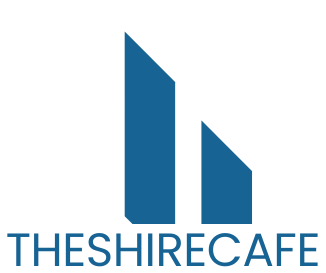Navigating the world of home financing can be daunting, especially for first-time buyers. One critical aspect that often comes into play is FHA mortgage insurance. This insurance is designed to protect lenders in case borrowers default on their loans, making homeownership more accessible for those with lower credit scores or smaller down payments.
Understanding FHA mortgage insurance is essential for anyone considering an FHA loan. It not only impacts monthly payments but also influences the overall cost of borrowing. By grasping the ins and outs of this insurance, potential homeowners can make more informed decisions on their path to owning a home.
Table of Contents
ToggleOverview of FHA Mortgage Insurance
FHA mortgage insurance consists of two primary components: the Upfront Mortgage Insurance Premium (UFMIP) and the Annual Mortgage Insurance Premium (MIP). UFMIP requires payment upon loan closing, typically equating to 1.75% of the loan amount. MIP, paid monthly, varies based on the loan amount and duration, generally ranging from 0.45% to 1.05% of the loan balance.
FHA mortgage insurance serves two main purposes. It secures lenders against losses from borrower default, encouraging them to offer loans to individuals with lower credit profiles. This insurance also allows first-time homebuyers to qualify with minimal down payments, often as low as 3.5%.
Understanding FHA mortgage insurance is essential for budgeting effectively. It increases monthly mortgage payments and influences total borrowing costs significantly. Buyers must factor these premiums into their financial planning to obtain a realistic picture of monthly housing expenses.
In addition, FHA mortgage insurance does not automatically terminate when equity reaches a certain level, unlike private mortgage insurance (PMI). On loans originated after June 3, 2013, MIP remains for the life of the loan if the down payment is less than 10%. This contrasts with loans with a higher down payment, where MIP can be removed after 11 years.
Navigating the intricacies of FHA mortgage insurance ensures potential homeowners comprehend their financial obligations, fostering informed decision-making throughout the loan process.
Types of FHA Mortgage Insurance

FHA mortgage insurance comprises two main components: the Upfront Mortgage Insurance Premium (UFMIP) and the Annual Mortgage Insurance Premium (MIP). Each plays a vital role in securing loans for borrowers.
Upfront Mortgage Insurance Premium (UFMIP)
UFMIP represents an initial cost associated with FHA loans. It amounts to 1.75% of the loan amount and is due at closing. Borrowers can either pay it in cash or finance it by adding it to the mortgage balance. This premium ensures that lenders are protected right from the start of the loan, making home financing accessible for those with lower down payments.
Annual Mortgage Insurance Premium (MIP)
MIP is an ongoing cost that borrowers pay monthly. It varies based on the loan amount and term length, typically ranging from 0.45% to 1.05%. The exact percentage depends on factors such as the loan’s length and the size of the down payment. MIP remains in effect for the life of the loan when the down payment is less than 10%. If the down payment equals or exceeds 10%, MIP can be eliminated after 11 years. This ongoing premium contributes to protecting lenders from borrower defaults throughout the loan period.
Benefits of FHA Mortgage Insurance
FHA mortgage insurance offers several advantages, particularly for first-time homebuyers. These benefits make homeownership more accessible and affordable for many individuals.
Lower Down Payment Requirements
FHA loans require a down payment of as little as 3.5% of the purchase price. This low down payment significantly lowers the barrier to entry for many borrowers. Individuals with limited savings can secure a home without the typically higher down payment of conventional loans, which often require 20%. This affordability empowers more buyers to enter the housing market.
Increased Access to Homeownership
FHA mortgage insurance increases access to homeownership for individuals with lower credit scores. Borrowers may qualify for FHA loans with credit scores as low as 580. Even those with scores between 500 and 579 can qualify with a 10% down payment. This inclusivity expands opportunities for first-time buyers and those recovering from financial setbacks. By mitigating lender risks through mortgage insurance, FHA loans open doors for many who may not otherwise qualify for conventional financing.
Drawbacks of FHA Mortgage Insurance
FHA mortgage insurance presents challenges that potential borrowers must consider. Understanding these drawbacks ensures informed decision-making in the home financing process.
Cost Considerations
Cost often emerges as a significant drawback of FHA mortgage insurance. Borrowers must factor in both the Upfront Mortgage Insurance Premium (UFMIP) and the Annual Mortgage Insurance Premium (MIP). The UFMIP, typically 1.75% of the loan amount, represents a substantial upfront expense. Monthly MIP ranges from 0.45% to 1.05% based on the loan specifics, adding to the overall monthly payment and impacting long-term financial plans. In contrast to conventional loan options, where private mortgage insurance (PMI) can often be canceled, FHA mortgage insurance remains for the life of the loan if the down payment is less than 10%. This continued cost can strain budgets and reduce the financial benefits that come with home equity.
Duration of Insurance Requirements
Duration represents another drawback impacting borrowers. FHA mortgage insurance does not automatically terminate when the homeowner builds equity. For loans originated after June 3, 2013, MIP remains in place for the entire loan period if the down payment is less than 10%. Even with a 10% down payment, MIP can only be eliminated after 11 years, significantly extending the period during which borrowers incur additional costs. This extended duration may result in higher total payments compared to conventional loans, where PMI can be canceled once sufficient equity is reached. Understanding these duration requirements is essential for potential homeowners evaluating the full financial implications of their mortgage insurance choices.
FHA mortgage insurance plays a vital role in making homeownership accessible for many aspiring buyers. By understanding the costs associated with UFMIP and MIP borrowers can better navigate their financial commitments. While these premiums help secure loans for those with lower credit scores and smaller down payments they also add to the overall cost of borrowing.
It’s important for potential homeowners to weigh the benefits against the long-term financial implications. With careful planning and awareness of these factors individuals can make informed decisions that align with their homeownership goals. Ultimately FHA mortgage insurance can serve as a stepping stone toward achieving the dream of owning a home.



